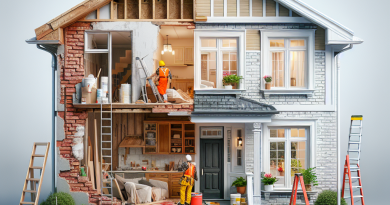The Ultimate Guide to Calculating Real Estate Renovation Costs
The Ultimate Guide to Calculating Real Estate Renovation Costs
Renovating a property can be a profitable venture, whether you are flipping houses for resale or improving a rental property for better returns. However, accurately estimating renovation costs is crucial to ensuring a successful project. In this guide, we will break down the key factors to consider when calculating real estate renovation costs.
1. Assessing the Property
Before diving into renovation costs, it is essential to assess the property thoroughly. Consider the size, condition, and age of the property, as well as any existing structural issues or damage that may need addressing. This initial assessment will help you determine the scope of work needed and provide a baseline for estimating costs.
2. Setting a Budget
Once you have a clear understanding of the property’s condition and scope of work, it is time to set a budget for the renovation project. Consider all potential costs, including materials, labor, permits, and any unexpected expenses that may arise during the renovation process. It is crucial to be realistic and factor in a buffer for unforeseen costs to avoid going over budget.
3. Breaking Down Costs
When calculating renovation costs, it is essential to break down the expenses into categories to get a more accurate estimate. Common categories include:
– Materials: This includes all building materials, fixtures, and finishes needed for the renovation. Research prices from different suppliers to ensure you are getting the best deals.
– Labor: Calculate labor costs based on the scope of work and the rates of contractors or tradespeople you plan to hire. Factor in any subcontractors or specialists needed for specific tasks.
– Permits: Don’t forget to budget for permits and inspection fees, as well as any other regulatory costs associated with the renovation project.
– Contingency: It is crucial to set aside a contingency fund for unexpected expenses that may arise during the renovation process. A good rule of thumb is to allocate around 10-15% of the total budget for contingencies.
4. Estimating Costs
To estimate costs accurately, it is essential to research prices for materials and labor in your local market. Get quotes from multiple suppliers and contractors to ensure you are getting competitive rates. Consider the quality of materials and workmanship when comparing prices, as cutting corners to save costs can lead to subpar results.
5. Creating a Renovation Plan
A detailed renovation plan is essential for staying on budget and on schedule. Outline the scope of work, timeline, and budget for each phase of the renovation project. Make sure to allocate resources efficiently and prioritize tasks based on their importance and impact on the overall project.
6. Tracking Expenses
During the renovation process, it is crucial to track expenses carefully to ensure you stay within budget. Keep detailed records of all costs, including receipts, invoices, and contracts. Monitor spending regularly and make adjustments as needed to avoid overspending.
7. Adjusting for Market Trends
Market trends can also impact renovation costs, so it is essential to stay informed about current pricing and labor rates in your local market. Factors such as supply and demand, inflation, and economic conditions can influence costs, so be prepared to adjust your budget accordingly.
In conclusion, calculating real estate renovation costs requires careful planning, research, and attention to detail. By assessing the property, setting a realistic budget, breaking down costs, estimating expenses accurately, creating a renovation plan, tracking expenses, and adjusting for market trends, you can effectively manage renovation projects and maximize profitability. Remember to always prioritize quality and professionalism to ensure successful outcomes and satisfied customers or tenants.






